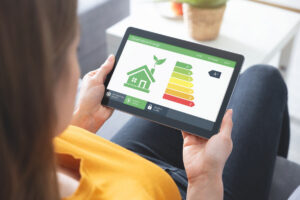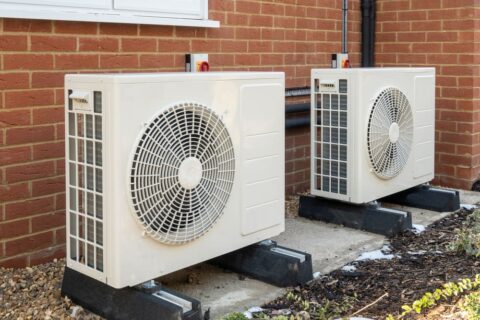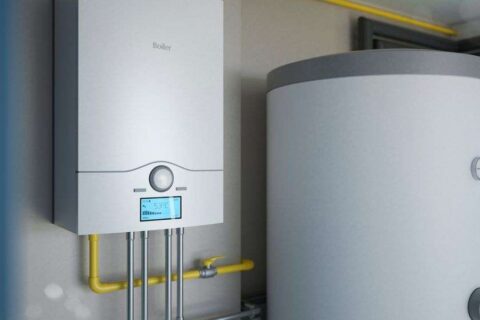Smart AC Features & Benefits: Why You Should Upgrade Today
Smart AC units come packed with energy-saving features that make a big difference. Traditional air conditioners with smart control thermostats can drain your wallet and the environment, but a smart device or smart controller can improve connection. In contrast, smart ACs optimize energy use, keeping your space cool without the hefty bills. These units learn your habits, adjust settings automatically, and can even be controlled from your smartphone. This means you save money while enjoying comfort.
Investing in a smart AC isn’t just about staying cool; it’s about making a smart choice for your home and budget. With features like programmable schedules and energy usage reports, these smart air conditioners empower you to take control of your energy consumption. Discover how smart AC energy-saving features can transform your cooling experience today.
Key Takeaways
-
Smart ACs can save energy by using advanced technology, which helps reduce your electricity bills and environmental impact.
-
Look for features like in-built sensors and air filter monitoring to ensure your AC runs efficiently and maintains good air quality.
-
Integrating your smart AC with other smart home devices allows for better control and automation, enhancing convenience and energy savings.
-
Utilize scheduling and geofencing to optimize your AC’s operation based on your presence at home, ensuring it only runs when needed.
-
Regularly analyze your AC usage and adjust settings for different zones in your home to maximize comfort while minimizing energy consumption.
-
By choosing a smart AC with these features, you can enjoy a comfortable living space while being environmentally responsible.
Understanding Smart AC Technology
Definition
Smart air conditioning technology refers to systems that use advanced features for climate control. These smart air conditioners can adjust their operation based on user preferences and environmental conditions. They often include energy-saving features that help reduce electricity costs.
Smart air conditioners allow users to maintain comfortable temperatures in their homes efficiently. They achieve this through smart air conditioners, sensors, and algorithms that optimize cooling performance. This technology plays a significant role in modern climate control, making it easier for people to manage their indoor environments.
Wi-Fi Connectivity
Wi-Fi connectivity is a key feature of smart ACs. Users can control these air conditioner units remotely using smartphones or tablets. This means you can adjust the temperature from anywhere, whether at home or away.
Most models come with dedicated apps. These smart air conditioners apps allow users to turn the unit on or off, set schedules, and monitor energy usage. For example, if you forget to turn off your AC before leaving for work, you can do it from your phone.
This remote management capability enhances convenience and ensures optimal comfort. It also allows users to monitor their energy consumption in real-time. Such insights help identify patterns and encourage more efficient usage of smart air conditioners.
Energy Efficiency
Energy efficiency is crucial in the design of smart air conditioners. Manufacturers focus on creating smart air conditioners that consume less power while delivering effective cooling. Many best smart air conditioners are rated with high Energy Efficiency Ratio (EER) scores.
These ratings indicate how much cooling a system provides per watt of electricity consumed. Higher EER scores for smart air conditioners mean greater efficiency, leading to lower energy bills over time.
Smart ACs often include features like variable speed compressors and programmable thermostats. Variable speed compressors adjust their speed according to the cooling demand. This results in less energy waste compared to traditional units and smart air conditioners that operate at full capacity all the time.
Programmable thermostats allow users to set specific cooling schedules. For instance, you can program your AC to cool your home before you arrive from work. This approach saves energy during hours when no one is home with smart air conditioners.
Examples of Smart ACs
e popular options include portable smart air conditioners. These smart air conditioners are versatile and easy to move between rooms. They provide similar benefits as traditional smart ACs but with added flexibility.
Investing in a smart air conditioner leads to long-term savings and comfort. The combination of smart air conditioners, remote management, energy efficiency, and modern technology makes them an excellent choice for any household.
Key Features of Smart ACs
Operating Modes
Smart ACs offer various operating modes to enhance energy efficiency. These modes include cooling, heating, dehumidifying, and fan-only options. The cooling mode is the most common, providing optimal temperature control during hot weather. The smart air conditioner heating mode allows users to warm their space during colder months.
Dehumidifying mode helps reduce humidity levels without significant cooling. This is useful in humid climates where a smart air conditioner can make moisture uncomfortable. Fan-only mode circulates air without cooling or heating, saving energy while maintaining airflow. Many smart ACs also feature an auto mode. This automatically adjusts settings based on the room temperature, maximizing comfort and energy savings.
Mobile Applications
Mobile applications play a crucial role in controlling smart AC settings. Users can adjust temperature, change modes, and set schedules directly from their smartphones. These apps often provide real-time data about energy usage with a smart air conditioner. This feature helps users monitor their consumption and make adjustments to save energy.
e apps allow users to create custom schedules. For example, one can program the AC to turn on before arriving home. This ensures a comfortable environment upon arrival without wasting energy when no one is home. Notifications about maintenance reminders or filter changes for the smart air conditioner may also be included in these applications.
Voice Control Compatibility
Many smart ACs are compatible with voice-activated devices. This smart air conditioner feature allows for hands-free operation, enhancing convenience for users. By using simple voice commands, individuals can adjust settings without needing to reach for their phones or remote controls.
Devices like Amazon Alexa and Google Assistant facilitate this functionality. Users can say commands like “set the AC to 72 degrees” or “turn off the air conditioner.” This capability is especially beneficial for people with mobility challenges or those who prefer a more seamless experience at home.
Energy Efficiency Benefits
Smart ACs help reduce energy costs through their advanced features. They optimize performance based on user preferences and environmental conditions. For instance, many models use energy-efficient technology to minimize power consumption while providing effective cooling.
Using smart scheduling and mobile apps contributes significantly to energy savings. By allowing users to operate their ACs more efficiently, they can lower their electricity bills over time. Some smart ACs come with inverter technology. This adjusts the compressor speed according to the cooling demand, further enhancing energy efficiency.

Benefits of Energy Efficiency
Lower Bills
Smart ACs can significantly lower energy bills over time. Traditional air conditioners often run continuously, leading to high energy consumption. Smart models use advanced technology to optimize performance. They adjust cooling based on the room’s needs and outside temperature. This results in lower energy usage.
Homeowners can save up to 30% on their monthly energy costs by using a smart AC. Over a year, this adds up to substantial savings. For instance, if a family spends $200 monthly on cooling, they could save $600 annually. This reduction in costs makes smart ACs an attractive option for many households.
Environmental Impact
The environmental benefits of reduced energy consumption are also significant. Energy production often relies on fossil fuels, which contribute to pollution and greenhouse gas emissions. By lowering energy demand, smart ACs help decrease these harmful effects.
Using less energy means fewer resources are needed for power generation. This leads to a smaller carbon footprint for each household. In turn, this supports efforts to combat climate change. People can feel good knowing their choices contribute to a healthier planet.
Programmable Features
Programmable features in smart ACs play a crucial role in energy savings during non-peak hours. These systems allow users to set schedules for when the AC should operate. For example, homeowners can program their units to cool the house before they arrive home from work.
This feature ensures the AC runs less during peak electricity hours when rates are higher. Many utility companies charge more for electricity during these times. By running the AC at off-peak hours, families can maximize their energy savings and reduce costs.
Smart ACs may also include features like remote control via smartphone apps. Users can monitor and adjust settings from anywhere. This convenience means they can turn off the AC if they forget before leaving home.
Cost Savings
The initial investment in a smart AC may be higher than traditional models. However, the long-term cost savings make them worthwhile. With lower monthly bills and reduced maintenance costs, these units pay for themselves over time.
Energy-efficient appliances often qualify for rebates or tax credits. Homeowners can take advantage of these programs to offset the purchase price. This makes investing in a smart AC even more appealing.
In summary, smart ACs offer multiple benefits related to energy efficiency. They lower energy bills, reduce environmental impact, and provide convenient programmable features that promote savings during non-peak hours.
Smart Home Integration
Advantages of Integration
Smart ACs work well with existing smart home systems. They offer energy-saving features that enhance overall efficiency. By connecting to other smart devices, users can create a cohesive environment. For instance, a smart thermostat can adjust the AC based on room occupancy. This reduces energy waste and improves comfort.
Users benefit from seamless control over their homes. Smart climate control systems allow for centralized management of temperature settings. This integration leads to lower utility bills and a more comfortable living space.
Communication with Devices
Smart ACs communicate with various connected devices. This communication allows for enhanced automation in the home. For example, when a user leaves for work, the smart thermostat can signal the AC to adjust the temperature. This helps maintain an optimal environment while saving energy.
Smart controllers also enable coordination between devices. If a window is open, the smart AC can pause its cooling function. This prevents unnecessary energy use and keeps costs down.
Convenience of Management
Managing multiple appliances through a single app is a key advantage of smart technology. Users can control their smart ACs alongside other devices like lights and security systems. The intuitive smartphone app makes this process simple.
With remote phone control, adjustments can be made from anywhere. Users can change settings before arriving home or while away on vacation. This feature adds convenience and peace of mind.
The ability to monitor energy consumption through the app is valuable too. Users receive insights into usage patterns. This information helps them make better decisions about energy-saving practices.
Smart applications enhance user experience further. They provide alerts when maintenance is needed or when filters should be changed. Keeping track of these tasks ensures the system runs efficiently.
In summary, integrating smart ACs into a smart home ecosystem offers numerous benefits. The synergy between devices leads to improved energy efficiency and comfort. Users enjoy greater control and convenience, making everyday life easier.
Utilizing In-Built Sensors
Occupancy Detection
In-built sensors in smart AC units play a key role in optimizing temperature control. These devices can detect if people are present in a room. When the room is occupied, the thermostat adjusts the cooling settings to maintain comfort. If no one is detected, the system raises the temperature to save energy. This feature reduces unnecessary cooling when rooms are empty.
Smartphones and apps enhance this capability further. Users can monitor occupancy through their mobile devices. They can also set preferences based on their routines. For instance, if someone typically leaves for work at 8 AM, they can program the AC to increase the temperature shortly after that time. This creates an efficient home climate while minimizing energy waste.
Humidity Control
Humidity sensors are another vital feature of smart AC systems. These sensors measure moisture levels in the air. When humidity rises, the unit can adjust its cooling settings accordingly. It ensures that the environment remains comfortable without overcooling.
Maintaining humidity levels is essential for comfort and health. High humidity can make temperatures feel warmer than they are. Smart systems respond quickly to changes in humidity, providing relief without excessive energy use. This efficiency helps in lowering utility bills while keeping homes comfortable.
Motion Detection
Motion detection adds another layer to energy-saving capabilities. Smart ACs equipped with motion sensors can identify movement within a space. If activity is detected, the unit operates at optimal cooling levels. If no motion is sensed for a certain period, it can switch to energy-saving modes.
This feature works well in various settings, such as living rooms or offices. For example, during meetings or family gatherings, the AC maintains a pleasant atmosphere. After everyone leaves, it conserves energy by reducing output.
Users can customize these settings via their smartphones or apps. They can adjust how long the system waits before switching to energy-saving mode. This flexibility allows for better management of home climate while ensuring comfort.
Summary of Benefits
-
Optimized Temperature Control: Adjusts based on room occupancy.
-
Humidity Management: Maintains comfort efficiently.
-
Energy Savings: Reduces usage when spaces are unoccupied.
Effective Air Filter Monitoring
Importance of Maintenance
Regular air filter maintenance is crucial for optimal AC performance. Dirty filters can restrict airflow, making the system work harder. This leads to increased energy consumption and higher utility bills.
Air conditioners rely on clean filters to function efficiently. If the filter is clogged, the air conditioning unit cannot cool the room effectively. This can cause the unit to overheat and potentially break down. Conventional air conditioner users often neglect filter changes, resulting in poor performance.
Smart Reminders
Smart air conditioners have advanced features that remind users when to replace filters. These systems monitor filter status and send alerts via a smartphone app or display panel. Users receive notifications based on usage patterns and filter conditions.
This technology helps maintain consistent performance. It ensures that users do not forget about routine maintenance. With these reminders, maintaining air quality becomes easier for everyone.
Energy Efficiency Connection
Clean filters significantly improve energy efficiency. When filters are clean, air flows freely through the system. This allows the air conditioning unit to use less energy while cooling the space.
Studies show that replacing dirty filters can reduce energy consumption by up to 15%. For example, a smart air conditioning system with a clean filter can operate at optimal fan speed. This reduces strain on the compressor and prolongs its lifespan.
Smart air conditioners adjust their operation based on filter cleanliness. They can modify cooling cycles to save energy when needed. This adaptability contributes to lower energy costs over time.
Practical Examples
Consider portable air conditioners used in smaller spaces. Regularly changing their filters keeps them running efficiently. A well-maintained portable air conditioner can cool a room faster and consume less power.
In contrast, traditional air conditioners without monitoring may struggle with dirty filters. They often run longer than necessary, leading to wasted energy and higher bills.
Scheduling and Geofencing
Scheduling Features
Scheduling features in smart air conditioners allow users to set specific operating times. Users can program their AC to turn on or off at designated hours. This means that the AC can cool the home before anyone arrives. For example, a user may set the AC to start cooling at 5 PM, just in time for their return from work.
This feature helps save energy. The AC won’t run unnecessarily when no one is home. By using scheduling, users can avoid wasting electricity. They can also ensure their environment is comfortable upon arrival. Most smart thermostats offer this feature, making it easy to manage temperature settings.
Geofencing Technology
Geofencing technology uses GPS to adjust AC settings based on user location. When someone leaves a defined area, the AC can automatically turn off. Conversely, when they return, the system can turn back on. This ensures the home is cool without running the AC all day.
Geofencing enhances convenience. Users do not need to remember to adjust settings manually. It works seamlessly in the background. For instance, if a user leaves for work at 8 AM, the AC turns off. As they approach home around 5 PM, it turns back on.
Benefits of Automated Adjustments
Automated adjustments maximize comfort and savings. Smart ACs adapt to users’ schedules and habits. This leads to more efficient energy use. The system learns preferences over time, ensuring optimal performance.
Energy savings are significant with these technologies. Users can reduce their electricity bills without sacrificing comfort. For example, if an AC runs only when needed, it consumes less power overall.
Moreover, automated systems improve indoor air quality by maintaining consistent airflow with fan settings. Proper airflow prevents humidity buildup and mold growth. This feature promotes healthier living environments.
Analyzing Usage and Zones
Energy Monitoring
Smart AC systems have the ability to monitor energy usage patterns over time. They collect data on how much energy is consumed in various conditions. This information helps homeowners understand their consumption habits. By analyzing this data, users can identify peak usage times. They can also see which settings are the most efficient. This insight can lead to better decisions about cooling needs.
Data from smart ACs shows that users often waste energy by overcooling spaces. With accurate monitoring, it becomes easier to adjust settings. For example, if a family notices high consumption during certain hours, they can change their schedule. Smart ACs help in diagnosing issues that lead to unnecessary energy use. Users can receive alerts for maintenance, ensuring systems run efficiently.
Zoned Cooling
Zoned cooling is a feature that enhances comfort in different areas of a home. It allows users to set different temperatures for various rooms or zones. This is especially useful in larger homes where temperatures may vary significantly. For instance, bedrooms might need cooler air at night while living areas require less cooling during the day.
By using zoned cooling, families can save energy and improve comfort. Instead of cooling the entire house, they can focus on specific areas based on usage. If no one uses a room frequently, it does not need to be cooled as much. This targeted approach reduces overall energy consumption.
Personalized Settings
Personalized settings are another significant advantage of smart ACs. These systems can adapt to individual room needs based on preferences or activities. For example, a home office may require a cooler temperature during work hours. In contrast, a playroom might need less cooling when children are outside.
Users can program their smart ACs with different profiles for each room. Some models even learn from user behavior over time. They adjust automatically based on patterns detected in daily life. This personalization enhances comfort while optimizing energy use.
Homeowners benefit from these features by creating an environment that suits their lifestyle. Smart AC systems cater to individual preferences without wasting energy on unoccupied spaces.
Final Remarks
Smart ACs are game-changers for energy savings and comfort. You’ve learned about their innovative features, from built-in sensors to smart home integration. These technologies not only lower your energy bills but also enhance your living environment. By understanding and utilizing these features, you can take control of your home’s climate efficiently.
Now is the time to embrace smart AC technology. Upgrade your system and enjoy the benefits of energy efficiency and convenience. Dive into the world of smart cooling solutions today, and watch your energy costs drop while enjoying a more comfortable home. Don’t wait; start making smarter choices for your space now!
Frequently Asked Questions
What is a smart AC?
A smart AC is an air conditioning unit that connects to your home Wi-Fi. It allows remote control through smartphones or smart home systems, enhancing convenience and energy management.
How do smart ACs save energy?
Smart ACs save energy by using advanced algorithms to optimize cooling. Features like scheduling, geofencing, and in-built sensors help maintain ideal temperatures efficiently.
Can I integrate a smart AC with my smart home system?
Yes, most smart ACs are compatible with popular smart home systems like Google Home and Amazon Alexa. This integration allows for seamless control and automation.
What are in-built sensors in smart ACs?
In-built sensors detect temperature, humidity, and occupancy. They adjust settings automatically to enhance comfort while minimizing energy consumption.
How does scheduling work in smart ACs?
Scheduling lets you set specific times for the AC to operate. This feature ensures it runs only when needed, reducing unnecessary energy use.
What is geofencing in smart AC technology?
Geofencing uses your smartphone’s location to determine when you’re home or away. The AC adjusts its operation accordingly, saving energy when you’re not present.
How can I monitor air filter status in a smart AC?
Many smart ACs have air filter monitoring features. They alert you when it’s time to clean or replace the filter, ensuring optimal performance and air quality.


